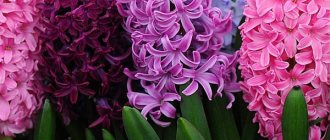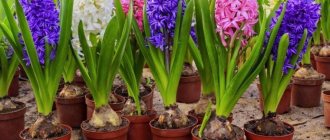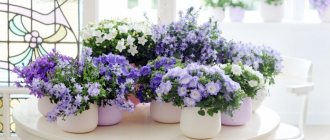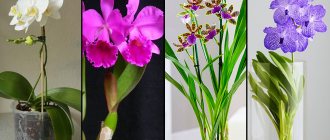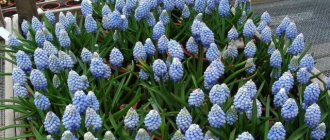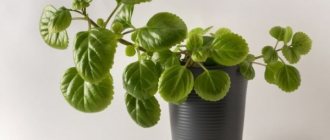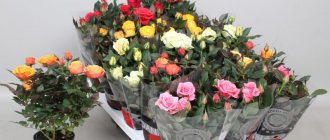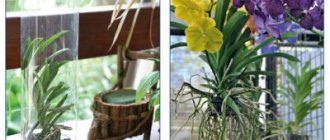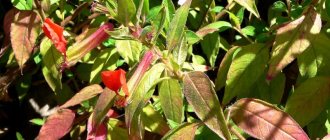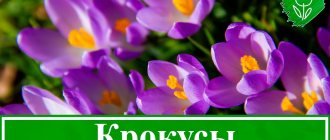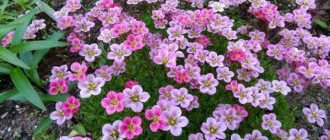The bulbous flowering perennial plant hyacinth (Hyacinthus) is a member of the Asparagus family, but previously it was part of the Liliaceae family, and it was also classified as a separate Hyacinth family. Translated from ancient Greek, hyacinth means “flower of rain.” The plant was named after the hero of the ancient Greek myth. In those ancient times, there lived a very handsome young man Hyacinth, the son of the king of Sparta. His friend was the god Apollo; he often descended from heaven to earth to teach Hyacinth to throw discs. And then one day, while training Hyacinth, Apollo threw a discus, and the young man rushed after it to return it to the god. However, the god of the West Wind, who was secretly in love with the prince, became jealous of him, and was able to turn the disk in such a way that he broke the handsome man’s head. Hyacinth was dying in his friend's arms, and he could do nothing to save him. Then God, heartbroken, decided to create an incredibly beautiful flower from drops of the blood of a beautiful young man, which was called hyacinth.
Brief description of cultivation
- Landing . Hyacinth bulbs are planted in the fall in September or October. And they are dug up every year after the foliage turns yellow (in the last days of June or early July).
- Storage . For storage, the bulbs are placed in a well-ventilated area with moderate humidity. They are placed in paper bags or in 2 layers in boxes. For the first two months, planting material is stored at a temperature of about 25 degrees, and then it is transferred to a cooler place (about 17 degrees).
- Illumination . Needs plenty of bright sunlight.
- Soil . It should be nutritious, drain well and contain a large amount of humus. Acidity should not be lower than 6.5.
- Watering . During prolonged drought, hyacinths should be watered so that the soil is wet to a depth of 15 to 20 centimeters.
- Fertilizer . You need to feed the flower twice or three times during the season. The first feeding is at the very beginning of the growing season with phosphorus-nitrogen fertilizer, the second is during the formation of buds and the third is when the bush fades with phosphorus-potassium fertilizer.
- Reproduction . Seeds and babies.
- Harmful insects . Flower flies (hoverflies), aphids, thrips, onion root mites, stem and root-knot nematodes and mole crickets.
- Diseases . Penicillium rot, rhizoctonia blight, fusarium blight, yellow or soft bacterial rot, variegation.
- Properties . Any part of the plant contains a poisonous alkaloid.
Varieties by color
Hyacinth comes in many colors. By color, varieties are divided into separate categories and have their own names and descriptions.
| Color range (varieties) | Description |
| Blue |
|
| Purple |
|
| White |
|
| Pink |
|
| Red and yellow |
|
Features of hyacinth
Hyacinth is one of the earliest spring flowers. This plant is native to North Africa, the Middle East and the Mediterranean. However, Holland has done a lot to popularize hyacinth, which is why many people call it the world’s “hyacinth center.” The largest number of varieties and varieties of hyacinth appeared in the Netherlands. And from the city of Haarlem, which is located in Holland, a huge number of bulbs of this flower are sent all over the world every year.
In hyacinths, the dense bulb consists of lower succulent leaf plates. The height of the flowering stem is about 0.3 meters; it is a continuation of the bottom. In a faded bush, the stem dries out along with the narrow leaf plates directed upward, which sit at the very bottom of the stem. However, in the corner of the upper leaf plate on the stem inside the bulb, a bud is formed, which over time becomes a new bulb, which will bloom next year. Bulbs can also form in the corners of other leaf blades, but they are weaker. These bulbs are children; if necessary, they can be separated and new bushes grown from them. The flowers are part of the apical racemes, which have a cone-shaped or cylindrical shape. The flower's perianth has the shape of a bell-shaped funnel, its blades are bent, and the color is rich. The inflorescences can be painted in various color shades, for example: red, purple, yellowish, white, pink, blue, etc. The flowers can be double or simple. This plant has a three-lobed fruit, with each nest containing a pair of seeds covered with a delicate peel.
All about HYACINTHES: proper planting of hyacinths, care and feeding. Subtleties of forcing hyacinths
general information
Each hyacinth inflorescence resembles an independent lush bush or bouquet. Despite its exotic origin, it can be grown in almost any latitude. It came to us from Africa, Asia Minor and the Mediterranean, but easily adapts to the cold Russian regions.
Even if you are just beginning to be interested in flowers, you have probably come across hyacinths in the spring. They are often given in flowerpots instead of bouquets for the spring holidays. Many people mistakenly believe that after flowering the plant dies, but in fact, with simple care it will live for several years.
Hyacinths are herbaceous and rather low, with a rounded bulbous root. Dense, voluminous leaves emanate from the fleshy stem, covering the base of the shoot. The inflorescence brushes consist of small bells with 5 petals each. Moreover, they are not necessarily monochromatic - there are spectacular variegated varieties.
Photo: domashniecvety.ru
Features of cultivation
Each crop has its own agrotechnical requirements. Hyacinth differs from many flowers in that it is quite capricious and demanding to care for. That is why, before decorating your garden with it, you need to find out how to properly care for it and what it needs for normal growth and development. Basic rules for growing hyacinth:
- The soil must be neutral; it should contain turf and leaf soil (1:1), as well as baking powder. If the soil is acidic, then lime will have to be added to it, and clayey soil can be corrected by adding sand to it.
- This plant reacts extremely negatively to stagnation of water in the soil, which is why it should be provided with good drainage.
- Choose a sunny place to grow hyacinth, but excessively bright lighting can harm it.
- A site that is located close to trees and shrubs is well suited for planting, because the flowers must be protected from gusts of wind.
- Do not feed hyacinths with fresh organic fertilizer.
How to grow rain flowers correctly
Hyacinths prefer sunny and windless beds. It is advisable to choose surfaces that have a slight slope to allow spring water to drain. Prolonged retention of moisture in the place where flowers grow can destroy the planted bulbs.
To successfully grow plants, the soil must be permeable and fertilized with humus.
It is not recommended to use fresh organic compounds as fertilizers. If the soil has a clayey and dense base, then it is recommended to “dilute” it with river sand or peat soil.
For successful cultivation and abundant flowering, soil drainage plays an important role.
Planting hyacinths in open ground
What time to plant
Hyacinth bulbs are planted in open soil in the last days of September or the first days of October. If you plant them ahead of schedule, then they may begin to grow, and the coming winter cold will destroy them. If they are planted later than necessary, then they may not have time to take root well before frost.
The area where hyacinths will grow must be prepared in advance. Digging the soil to a depth of 0.3 to 0.4 m, add 10 to 15 kilograms of rotted compost or three to four year old humus, as well as approximately 15 grams of magnesium sulfate, 70 grams of superphosphate and 30 grams of potassium sulfate from calculation per 1 square meter. Depending on what the soil consists of, you can also add peat or sand to it if necessary. If the soil on the site is sandy, then 1.5 times more potassium and magnesium fertilizers should be added to it. It is recommended to feed hyacinths with nitrogen-containing fertilizers in the spring and summer.
Planting in autumn
It was already mentioned above that hyacinth bulbs are planted in the garden in the autumn, or more precisely, in September–October. Experienced gardeners advise planting medium-sized bulbs, which are also called “flower bulbs,” because they produce flower stalks that are highly resistant to bad weather.
First, inspect the planting material and remove all diseased, soft or injured bulbs. Then, before planting in the soil, they are immersed in a solution of a fungicidal preparation for 30 minutes. The bulbs, reaching approximately 50 mm in diameter, are planted to a depth from the bottom of 15 to 18 centimeters, the row spacing should be about 20 centimeters, and the distance between the bulbs should be 15 centimeters. Smaller bulbs, as well as children, are planted at a shallower depth, and the distance between them also needs to be reduced.
Hyacinth grows best in open soil if it is planted in a “sandy jacket”. To do this, a layer of clean river sand is poured onto the bottom of the groove or planting hole, the thickness of which should be about 30–50 mm. Press the onion a little into this layer and sprinkle it on top with sand and only then with soil. Thanks to this planting method, there will be no stagnation of water in the soil, as a result of which the risk of rot on the bulb will be significantly reduced. If the bulbs are planted in dry soil, they must be watered.
Planting hyacinths in a new way
Spring planting
Hyacinth bulbs are not planted in spring.
Use in landscape design
Plants with blue and blue flowers are often used by designers to create the illusion of water in the garden. Hyacinths are no exception. Planted densely, in the form of a ribbon or a bright blue spot, they represent rivers or lakes.
A more traditional use of blue and cyan hyacinths is to plant them in flower beds, flowerbeds, flowerpots and flower pots, in groups of 5 or more plants. Mono flower beds and borders of flowers look beautiful , where plants are planted in the same color scheme.
Effective combinations of blue and light blue flowers with plants with white and yellow buds. Good neighbors for hyacinth are tulips, daffodils, muscari, and crocuses.
So that after the primroses wither, the flowerbed does not lose its decorative effect, seedlings of marigolds, pansies, primroses, and petunias are planted between them.
Hyacinth care
Caring for hyacinth grown in open ground is not too difficult, but you need to know all the agrotechnical rules of the crop and be sure to follow them. First of all, you need to ensure that there are no weeds in the area where the hyacinth grows, so weeding should be regular and timely. You should also remember that the surface of the soil around the bushes must be systematically loosened and this is done quite often. In order to reduce the number of watering, weeding and loosening after planting the bulbs in the ground, its surface is covered with a layer of mulch. Hyacinth should be watered only during drought, and the soil must be wet to a depth of 15–20 centimeters.
Fertilizer
In order for such flowers to grow and develop well, they must be fed in a timely manner. During the growing season, you only need to feed the bushes 2 or 3 times. Flowers can be fed with dry fertilizer, applied to the soil, or with a liquid nutrient solution (in this case, slightly less fertilizer is used). Before adding a nutrient solution to the soil, the flowers must be watered. If dry fertilizers are used, then they are scattered over the surface of the site, and then embedded in the ground using a hoe. Feeding time:
- the first - at the very beginning of the growing season, 20 to 25 grams of saltpeter and 15-20 grams of superphosphate per 1 square meter are used for fertilizing;
- the second - during the formation of buds, for this purpose 30 to 35 grams of superphosphate and 15–20 grams of potassium sulfate are added to the soil per 1 square meter;
- third - after the bushes have flowered, 30–35 grams of potassium sulfate and the same amount of superphosphates per 1 square meter are used.
Transfer
In order to transplant hyacinths to another area, it does not require much effort. To begin with, in the summer, when the bushes have faded, dig up the bulbs and put them away for storage. And with the onset of autumn, plant them in a new area. The bulbs are dug up a couple of months after the hyacinths have faded. This time is necessary so that the bulbs have time to regain strength after the growing season and flowering.
Watering and fertilizing
Normal growth of hyacinths is impossible without proper watering. The soil moisture in the pot must be adequate. The drainage layer controls this important point. Excessively wet soil is detrimental to the plant. Excess water is drained from the pan after each watering.
Advice! If water gets into the axils of the leaves, onto the bulb or bud, the plant will rot. Therefore, it is better to water at the edge of the pot.
Normal growth of hyacinths is impossible without proper watering.
Fertilizing is an important condition for normal plant growth. The first time the flower is fed immediately after it has been moved from darkness to light. For this, phosphate mixed with saltpeter is used. After the formation of buds, potassium with superphosphate is used for feeding (the amount of superphosphate dominates). The third time the hyacinth is fed after flowering. At this point, the amount of potassium is equal to the amount of superphosphate.
Advice! After each fertilizing, the soil must be loosened. In order not to injure the root system of the plant, loosening must be done carefully.
Fertilizing is an important condition for normal plant growth
Propagation of hyacinths
Growing from seeds
Hyacinth can be propagated by seed, which is ideal for those involved in plant breeding. Sowing of seeds is carried out in the last days of September, for this they use a box filled with a substrate consisting of humus, leaf soil and sand (2: 1: 1). Seedlings are grown for two years in a cold greenhouse. Hyacinths that emerge from seeds very rarely retain the varietal characteristics of the mother plant, which is why gardeners prefer to propagate such a plant vegetatively.
Reproduction by children
It is much easier to propagate hyacinth by children than by seeds. But at the same time, you need to take into account that the children on the bulbs grow extremely slowly, so in 1 year from 1 to 3 children can be formed. Try to separate the babies from the parent bulb; if they come off without much effort, then they are planted in a separate hole and grown. However, if the children are separated with great difficulty, then they are left on the parent bulb, which is planted in the ground with them.
In industrial floriculture, hyacinths are propagated by artificial methods, namely by cutting and cutting out the bottom. To do this, take a very sharp instrument and sterilize it well, make cuts on the bottom with it, or cut it out completely. Next, the bulbs are stored in a special way, and they form babies. It happens that about 40 children are formed on one bulb. This method of propagating hyacinths is described in great detail in the book “Plant Reproduction” by F. MacMillan Brose.
Propagation of hyacinth, cutting out the bottom, varietal hyacinths
Cutting
Inflorescences in which the lower flowers have begun to bloom are suitable for cutting. It is better to cut hyacinths in the morning or evening - flowers cut during the day quickly wither. It is not necessary to use a knife or scissors: the succulent flower stalks can be easily broken off at the base.
Peduncles placed in water secrete mucus - therefore, 3 hours after cutting, the water is changed, and only after that hyacinths can be used in bouquets. In the future, the water should be changed 2-3 times a day: in this case, the flowers can last up to 2 weeks.
Diseases and pests of hyacinths
Diseases
Hyacinths are quite resistant to diseases. However, if they were affected by the disease, then this could happen for the following reasons:
- the purchased planting material was already affected by the disease;
- the flowers were fed with fresh organic fertilizer;
- bad predecessors;
- a spoiled onion was planted in the ground;
- before planting, the bulbs were not subjected to preventive treatment;
- planting too thick.
Most often, this plant is affected by bacterial rot (bacterial disease), because of which the bulbs become like mucus, which smells very bad. The first signs of rot are that the bush is stunted in growth, and stripes and spots form on its foliage and peduncles. Diseased flowers are removed from the soil and destroyed, and the place where they grew is treated with bleach.
Hyacinth can also be affected by penicillium rot (a fungal disease). All parts of the affected bush located above the ground are covered with plaque, which is a product of sporulation of the fungus, rot appears on the plant, and its flowers dry out. To save the plant, it should be treated with a product containing copper.
Harmful insects
Various pests can also greatly harm hyacinth. The greatest danger to it is posed by flower flies; their larvae gnaw out the bottom of the bulbs. In order to get rid of them, they use such means as: Tabazol, Fly eater or Aktara. The flower can also be damaged by the mole cricket, which eats its underground part, as well as the root onion mite; the best way to combat such pests is by mulching the soil surface around the bushes.
It happens that the inflorescence just appears from the rosette and almost immediately falls out of it. This can happen due to stagnation of water in the ground, due to storing the bulbs in too cold a place, or due to early planting.
Harvesting and storing bulbs
The best time to dig up bulbs is the end of June or the beginning of July. You should look at the leaves of the plant: if they turn yellow and lie on the soil, it’s time to take a shovel and remove the bulbs from the ground. It is best to dig up Dutch hyacinth bulbs annually, otherwise in the second year of being in the ground without replanting, they may deteriorate their flowering.
Carefully dig up the bulb, rinse it in running water and dry it in the sun. If there are children on it, it is better to separate them from the adult bulb before planting in the autumn. Small children should not be separated from the mother's bulb.
It is best to store planting material in unclosed paper bags in a dry and warm place. It is convenient to attach labels with the name and color of the variety to the bags.
Care after flowering
After the hyacinths fade, their bulbs begin to regain their strength. Therefore, they must remain in the soil for some time. As soon as the bushes begin to fade, all care should be reduced to a gradual reduction in watering until it stops completely. In addition, do not forget to fertilize the soil for the third and last time at this time; thanks to it, the bulbs will receive the necessary amount of nutrients, which will have a beneficial effect on the growth and flowering of hyacinths in the next season. You can tell that the time has come to remove the bulbs from the ground by the foliage, which should turn yellow.
Digging up the bulbs
It is necessary to remove the bulbs from the soil every year. Otherwise, next season the bushes will bloom sparingly, and the likelihood that the bulbs will be affected by disease also increases. Also, thanks to the digging of hyacinths, which is carried out every year, it is possible to promptly discard spoiled bulbs and regularly separate the children.
Try to dig up the bushes before their foliage dies and falls off, as in this case it is very difficult to find the exact location of the bulbs. To remove the bushes from the ground, use a shovel, since the bulbs are located quite deep. The extracted bulbs will need to be washed under running water and pickled for half an hour in a Karbofos solution (3–4%), instead they can be left for 10 minutes. soak in very warm water (about 50 degrees). After this, they are placed in a shaded, well-ventilated place to dry for 7 days, the air temperature should be about 20 degrees.
How to preserve hyacinth after flowering
Storing hyacinth bulbs
At this time, you need to take care of the bulbs with all responsibility, since it is now that the inflorescence will form in them. After the bulbs are dried, they need to remove any remaining scales and roots. After which they are sorted and placed in boxes (preferably in 1 layer). It is better to leave too small children on the bulbs. If there are few bulbs, then to store them you can use paper bags with a signed label attached to them.
During storage of hyacinths, there are 2 stages. During the first two months, the bulbs should be kept at a temperature of 25 to 26 degrees, and then they are removed to a cooler place (about 17 degrees). The air should not be too dry, as this may cause the bulbs to dry out. In order to shorten the first stage of storage by 7 days, in the first week the planting material should be stored at a temperature of about 30 degrees. Do not forget that you need to choose a well-ventilated room for storing hyacinths. And immediately before planting the bulbs in the ground in the fall, it is recommended to keep them for about 7 days at the temperature that is typical for the garden. As a rule, during storage a large number of small children are formed on the bulbs; therefore, they must be planted in the soil very carefully.
Proper forcing of flowers
The choice of high-quality planting material is very important for successful flowering
The success of forcing hyacinths largely depends on the plant variety and how well the bulb is chosen. There are a number of requirements for planting material.
Preparing the bulb
In order for the hyacinth to bloom in a pot, it is necessary to properly prepare the bulb. This applies only to the seed that is dug out of the ground. If an onion is bought in a retail chain, it is known that it has passed all the stages of preparation listed below.
- Bulbs intended for germination are dug up in mid-summer. They are cleared of soil and kept in conditions of high humidity at +30°C for 14–15 days.
- Next, the temperature is reduced to +25°C and the seed is kept for two weeks.
- Then, until planting, the bulbs are kept at +17°C.
Boarding time
The rooting period of the bulb is 6–10 weeks, depending on the variety and quality of the seed. If they want to grow flowers by a certain time, they are guided by practice-tested deadlines:
- flowers for the beginning of the new year and Christmas - planting in the first half of September;
- by March 8 - at the end of October.
Soil preparation
Any small containers are suitable for planting hyacinths: plastic cups, deep disposable plates, pots, jars.
For planting you will need a certain list of materials and tools.
- A drainage 10–20 mm thick is formed at the bottom. These can be small pebbles mixed with sand.
- Next, add a layer of soil. To grow hyacinths, you cannot use sour. The optimal choice is a mixture of equal parts of leaf soil, turf and compost, with a little sand and peat added. You can also mix lowland peat and coarse sand in equal proportions. Another option is to buy ready-made soil mixture at a gardening store.
- A 5–7 mm layer of sand is poured onto the substrate. This is a precaution to prevent the plant's roots from rotting.
Landing
For forcing, deep pots 14–20 cm high are used. As the bulb grows, it will inevitably increase and protrude above the soil surface. Therefore, you need to plant it in the upper third of the pot, and not at the level of its edges.
For commercial purposes, hyacinths are grown in small boxes, but each bulb is in a separate cell
The planting process consists of several stages:
- lightly press the bottom of the bulb into the ground (do not screw it in!);
- sprinkle with earth so that the upper part of the bulb is free and protrudes above the ground level;
- It is permissible to sprinkle the top part with dry sawdust.
Attention! If several bulbs are planted at once, they should not touch each other. In this case, the planting should be quite crowded. The optimal distance between them is 2–2.5 cm.
Rooting period
After the flower is planted in a pot, it needs a period of rest. At this time, the following conditions are provided:
- complete lack of lighting;
- air temperature +5–7°С;
- normal humidity.
During the rooting period, constantly ensure that the soil in the container is moderately moist. Drying out is unacceptable. For the purpose of disinfection and fertilizing, the soil is watered with a solution of potassium permanganate and sprinkled with wood ash. The duration of the rest period is 2–2.5 months.
Storage space for pots:
- bottom shelf of the refrigerator;
- cold loggia;
- basement or cellar;
- garage.
The rest period is otherwise called “cold”. This is a mandatory step in the process of forcing bulbous flowers.
The final stage of forcing
–
After two months after planting, they begin to regularly check whether sprouts have appeared. Once they reach a height of 2–2.5 cm, the pots containing the seed move to a cool, well-sun location. Optimally - on the windowsill. The flower should remain here throughout the next month. In the first week after the end of the cold period, it is advisable to cover the pots with a paper cap.
Attention! During this period of plant growth, the air temperature should not exceed +15°C.
At the end of this stage, the buds appear and the pot is transferred to the place where it will be permanently located. Next, wait for the start of flowering. Hyacinths do not tolerate excess moisture well, so they need to be watered regularly, but in moderation.
Forcing in water
To obtain a “water” flower, before planting, all the same steps are followed as when growing in a pot. It is important to choose the right water container. It should be such that the bulb does not sink in the liquid, but comes into contact with it with its lower, root part. In order to achieve this, you can use various devices. A good choice is narrow glasses.
The water must be clean: rainwater or filtered. The container must be wrapped in dark paper and the plants should be sent to a cool place to go through the cold period. All this time, monitor the fluid level and top it up in a timely manner. After the first roots appear, fertilizer is added. For example, "Kornevin".
Types and varieties of hyacinths with photos and names
Hyacinth has been cultivated both in open ground and indoors for about 400 years. And not so long ago, experts believed that there were about 30 species and approximately 500 varieties of hyacinths. However, when the reorganization of classifications in botany occurred, most species were transferred to another genus. Today there are only 3 types of hyacinths, namely: eastern hyacinth (Hyacinthus orientalis), Litvinov hyacinth (Hyacinthus litwinowii) and Transcaspian hyacinth (Hyacinthus transcaspicus). Thanks to the efforts of breeders, many varieties and varieties have been obtained from these species.
All varieties are divided according to the shape of the flower - double and simple, according to the timing of flowering - late, early and middle, and also according to the color of the flowers. In the classification of flower color, all varieties are divided into 6 groups.
Blue hyacinths
- Perle Brillante . This is a late-flowering variety, the flowers have a pale blue hue, the height of the bush is about 25 centimeters, the flowering duration is about 20 days.
- Marie . An early flowering variety, flowering lasts from 16 to 18 days. The flowers are dark blue in color and decorated with a longitudinal purple stripe.
- Queen of the Blues . The flowering of this medium variety lasts approximately 15 days, the height of the bush is about 30 centimeters. The bluish flowers have a faint odor.
Lilac hyacinths
- Blue Magic . The height of the bush of this medium variety is about 25 centimeters, flowering lasts from 10 to 12 days. The color of the flowers is violet-purple.
- Indigo King . This late-flowering variety blooms for about 15 days, the length of the arrow is from 15 to 17 centimeters. The flowers are glossy purple-black.
- Bismarck . The flowering of this early-flowering variety lasts about half a month; the bush reaches a height of 22 to 25 centimeters. Light purple flowers are decorated with a longitudinal stripe of a more saturated shade.
Pink hyacinths
- Moreno . The early-flowering variety blooms for 13–18 days, the peduncle reaches a length of 20 to 23 centimeters. The color of the flowers is raspberry pink, they have a stripe of a darker shade.
- Anna Marie This medium variety has a long arrow - from 20 to 25 centimeters, and its flowering lasts approximately 15-17 days. The flowers are painted in a soft pink shade.
- Gertrude . The flowering period of this late-flowering variety lasts from 13 to 15 days, and its peduncle reaches a height of 23–25 centimeters. The flowers are dark pink.
Red hyacinths
- Hollyhock . This late-flowering variety blooms for 15–18 days, its peduncle has a height of 20–22 centimeters. Double flowers have a crimson-red color.
- La Victoire . The height of the peduncle of this early-blooming variety is from 20 to 25 centimeters, and glossy pinkish-red flowers open on it. Flowering duration is from 11 to 12 days.
- Tubcrgen's Scarlet . The flowering of this average variety lasts a little longer than half a month. The height of the peduncle is about 20–22 centimeters, the flowers are deep red and can be double.
White hyacinths
- Arentine Arendsen . The height of the bush of this early-flowering variety reaches 21–22 centimeters; it blooms from 15 to 18 days. The flowers are white or may have a cream tint.
- Snow Crystal . This late-blooming hyacinth has white, double flowers. Flowering duration is 13–18 days, and stem length is 25–28 centimeters.
- Madame Sophie . The flowering of this medium variety lasts 13–15 days, its stem length is from 19 to 23 centimeters. Double flowers are white.
Yellow and orange hyacinths
- Yellow Hammer . The arrow of this medium variety reaches 23–25 centimeters in length, and it blooms for 13 to 15 days. The flowers, painted in a rich yellow color, fade towards the end of flowering.
- City of Haarlem . The late-flowering variety has a flowering duration of 15 to 17 days, the length of the peduncle is from 25 to 27 centimeters. The yellowish flowers become pale cream at the end of flowering.
- Orange Boven . The flowering of this medium variety lasts about half a month. On peduncles 22–24 centimeters long there are apricot-salmon flowers, the edges of which are dark pink.
Most often, blue varieties begin to bloom first, and then white, pink, red, and lilac. And orange and yellow varieties bloom later than everyone else.
hyacinths 30 varieties
Plant classification
Hyacinths have been grown in home gardens for over 400 years. The main classification includes 3 types of plants:
- eastern, the most popular and widespread type of plant. Almost all known decorative varieties of rain flowers are grown on its basis. These flower stalks come in white, pink, blue or yellow;
- Hyacinth Litvinov. It has wider leaves of a bluish tint, flowers of a predominantly blue color with large stamens;
- Transcaspian flower. Has 1 or 2 inflorescences with light blue flowers.
The above species are the basis for the selection of other subspecies and modifications of the plant.
Hyacinths also differ in the shape of the flowers themselves - there are simple and double flowers. According to the flowering period, plants are divided into early, middle and late species.
Based on the color of the flowers (photos of hyacinth are full of the brightest colors), white, blue, pink, raspberry, lemon, lilac and apricot inflorescences stand out. Blue, white and pink hyacinths are usually the first to produce inflorescences in the gardens of our region.
